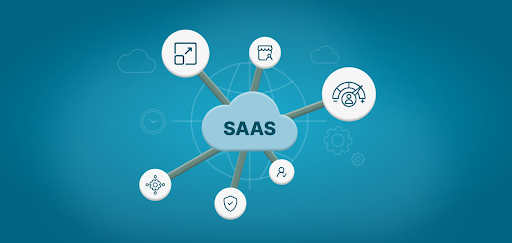SaaS, which is manifested as a software paradigm that distributes apps on The World Wide Web through the usage of the Internet is currently the most preferred way for delivering software in the ongoing digital revolution. In addition, it is necessary to build an extensible and scalable architecture, provided to always ensure uninterrupted performance and be ready to handle growing demands. In elaborating scalable software as a service architecture, it is necessary to be conscious of some vital topics.
Understanding Scalability Requirements:
“It is imperative that you conduct extensive research on the scale requirements of your software as a service application before the architecture design process. When designing a scalable system in consideration of the expected user expansion rate, data volumes, and moments of high usage, it is necessary to take into account multiple factors. If, for example, you need to rapidly grow your user base or cater to cyclical traffic patterns, you need to maintain high performance by expanding in a way that will minimize disruptions to the already-existing demand.”
– Steve Elworthy, Director at Wet Wall Panels
Microservices vs. Monolithic Architecture:
“Establish if the design is monolithic or microservices-based that would suit your software application as a service. With microservices, the scalability and adaptability are more cost-effective than with the monolithic approach, which is more streamlined and easier to create. The reason for this is that microservices divide the application into smaller services that are triggered apart. Whenever You can scale small components individually or on-demand basis too, which is possible only when you follow a microservices design. This brings efficiency to your applications and reduces the need for multiple maintenance efforts as your code becomes more mature.”
– Brett Gelfand, Managing Partner at Cannabiz Collects
Horizontal vs. Vertical Scaling:
“Choose by the type of scalability goals (whether it is horizontal or vertical) you intend to meet. To accomplish this, vertical scaling needs several numbers of instances of servers or services to evenly distribute the load. Inversely, horizontal scaling places its emphasis on escalating the computing resources of the servers or the services that are in use. If your application expands due to relatively steady and amenable load growth, you can consider the vertical way of scaling as the suitable approach. For one, vertical scalability offers an increased capacity, in terms of computation, storage, memory, and bandwidth. This kind of scalability is useful when you expect sudden spikes and fluctuations in the number of users that come to visit your site or when you have a lot of traffic.”
– Mark McShane, Digital PR Agency Owner, Cupid PR
Elasticity and Auto-scaling
“The employment of elasticity and self-management norms is the factor that regulates the resources that are used according to the load. This will indulge the grid usage to the furthest extent during the high load period while also dropping the costs during the low load period. The cloud-based services like –Amazon Web Services (AWS) and Microsoft Azure have auto-scaling capabilities that dynamically stand the server capacity by the will parameters like CPU usage or network traffic.”
– Windy Ko, HARO links specialist at HARO Link Building
Data Partitioning and Sharding
“Data partitioning and sharding are helpful tools that could be used in SaaS applications with large data volumes. They are used to disperse data in different databases or servers instead of using one set of data that is standalone. Connecting various sensors and devices to a cloud platform enhances the data retrieval efficiency and capacity. To handle loads in an equal and balanced fashion, as well as avoid bottlenecks, you need to split the data based on less crucial characteristics like customer ID or geographic region. Keeping your code consistent with the growth is an additional bonus and it will make sure the software runs without glitches.”
– Holly Cooper, Marketing Manager at LUCAS PRODUCTS & SERVICES
Caching Strategies
“One of the things that streaming platforms can do to lower latency and accelerate performance is the application of caching techniques. Multiple layers including database caching, object caching, and CDN caching should be utilized to reach the suboptimal support time. For example, to achieve this all you need is the in-memory caches such as Redis or Memcached which are effective in storing frequently retrieved data to avoid the repetitive database queries. It, in turn, would lead to a reduction in delay and help the general productivity level of the application.”
– Ben Flynn, Manager at Homefield IT
Asynchronous Processing
“Integration of asynchronous processing methods helps in the effective implementation of crucial business processes without interrupting the primary business flow. This refers to technologies that are middleware-based, for example, event-driven architecture and message queues. Contributing to this, one can achieve the most efficient scalability and responsiveness of the system. The fact that asynchronous processing boosts application performance is what helps it to scale at a higher efficiency and even keep on handling multiple requests once it is up and running without poor user experience. The task is to achieve this by isolating the flow of activities from user interactions.”
– Adam Crossling, Marketing & New Business Director at zenzero
Fault Tolerance and High Availability
Resisting the outages and stopping service disruption, you should develop your software as a service architecture that would be implemented, considering the fault tolerance and high availability principles. To reduce the possibility of failures existing, there needs to be an overlapping, failure-resistant feature and a plan in case of a disaster. For instance, you can have your application configured to run simultaneously across availability zones or regions and then use a load balancer to spread the traffic equally. In this case, a robust architecture is needed to take care of any failures in the hardware or network interruptions and guarantee the availability of the service at all times.
Monitoring and Performance Optimization
Put in place powerful monitoring and performance improvement tools that shall always be running in a bid to check the health of the system, locate performance bottlenecks around, and fine-tune the resource allocation. Whether through this proactive approach, it will always be running in top condition as it becomes more popular. (These tools include tools like New Relic, Datadog, and Prometheus) that enable organizations to track applications in real-time based on metrics like CPU & memory usage, network, etc. The proactive approach and data inspection help recognize problems early and increase service quality even under the circumstances of rising consumer demand.
Future-proofing and Flexibility
Among the multitude of challenges involved in the creation of your software as a service (SaaS) architecture, one that should be paid attention to is the design for further expansion and incorporation of advanced technologies. Flexibility should be integrated into the design implementation so that it can easily be adapted to the changing business scenarios, new features, and emerging technologies thereby ensuring that there are no disruptions incurred on the business. The usage of cloud-native technologies which are modular and loosely coupled, helps in the creation of an application that in the future would be adaptable and stable no matter the dynamic nature of the market or the changes in technology.
Conclusion
Regularly, it becomes obligatory to enjoy the process of deciding what factors should be considered in the hardware architecture of a software-as-a-service (SaaS) plan. These elements are composed of gathering up the scalability, architecture vision, scaling employed, data storage and handling system, and robust fault tolerance system. Most importantly, apply recognized methods as well as your keen awareness of scalability as you develop the final product, you will be able to ensure it will fill in the gaps as your users and your company’s needs become more advanced.
Interesting Read






